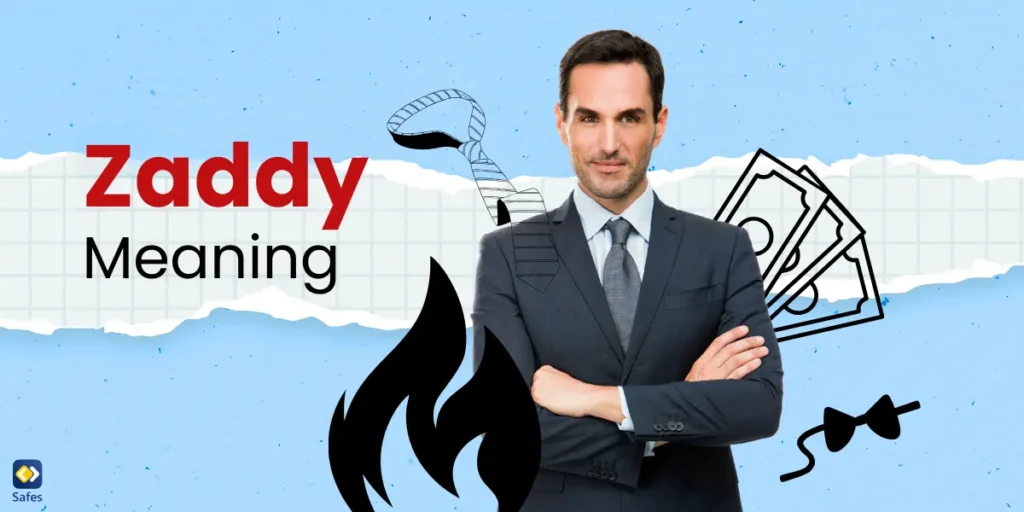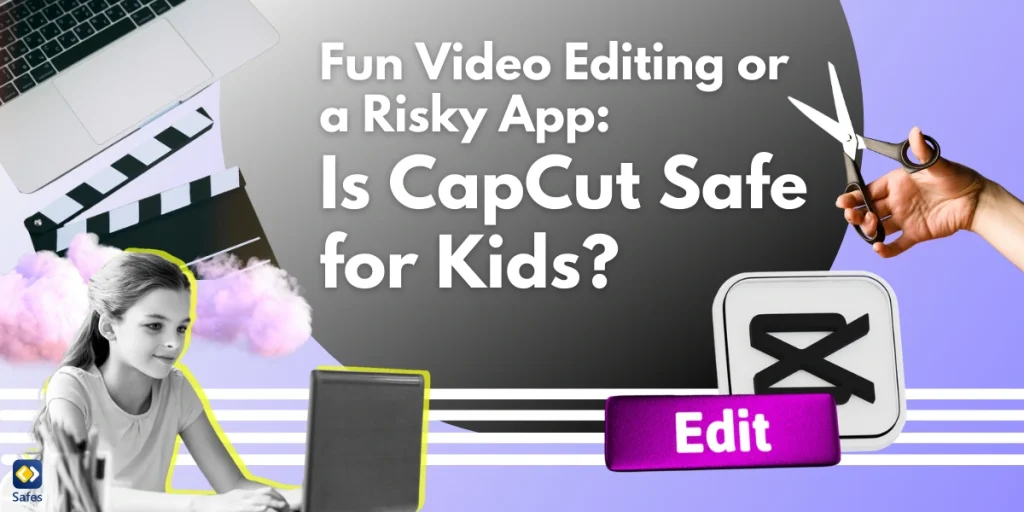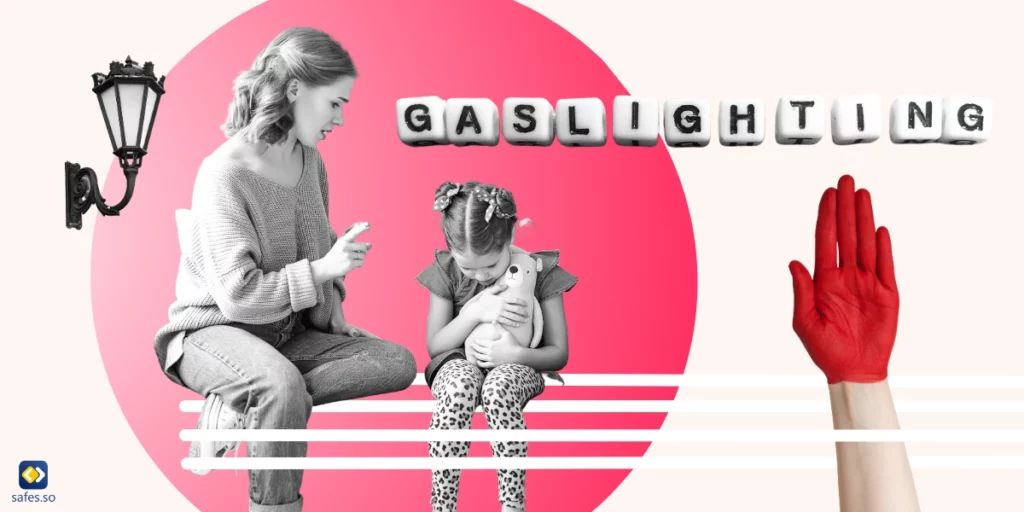If you have heard your child or teen casually drop the word zaddy into a conversation and wondered “What’s a zaddy?”, you are not alone. New slang seems to pop up overnight, often leaving parents wondering what it really means and whether it is something to worry about. In this blog, we are breaking down the meaning of zaddy in slang, where it came from, how it’s used online, and what you need to know to help keep your child safe and confident in their digital world.
Download and Start Your Free Trial of the Safes Parental Control App
What Does Zaddy Mean?
Zaddy is a slang term used to describe a man who is attractive, stylish, and confident. It often refers to someone who is well-groomed and carries himself with a certain charm, sometimes with a slightly older or more mature vibe.
According to Urban Dictionary, zaddy is not just about appearance or style. The term often carries a sexual or flirtatious undertone. It can describe a man who is not only attractive but also sexually appealing, sometimes implying a dominant or protective role in a relationship. Definitions highlight that a zaddy is typically someone older who “takes care of you, treats you well, and loves you right,” blending physical attraction with a sense of maturity and authority.

Origin of Zaddy
The word zaddy first started gaining attention around 2016, largely thanks to rapper Ty Dolla $ign and his song titled “Zaddy.” Before that, the term had been used casually online as a playful twist on daddy, but the song helped push it into mainstream pop culture. From there, it spread through memes, social media posts, and celebrity interviews, becoming a popular way to describe someone who is more mature, attractive, stylish, and confident.
How It’s Used in Real Digital Interactions
When teens use zaddy in texts, social media posts, or gaming chats, it’s can be meant as a playful or admiring compliment. Sometimes it’s used seriously to hype someone up or flirt, and other times it is dropped in a more sarcastic or joking way, depending on the mood.
Here are a few examples of how it might show up:
- Text to a friend: “Omg did you see Mr. L’s new haircut? Total zaddy vibes.” (playful, admiring)
- Snapchat caption: “Feeling like a zaddy today.” (self-deprecating or joking)
- Comment on a gaming stream: “Our healer is such a zaddy carrying the whole team.” (teasing but positive)
Platform-Specific Usage
On TikTok, zaddy is often used in videos hyping up celebrities, fashion influencers, or even fictional characters. It can be playful and flirty, and TikTok’s short-form content makes it easy to use in trending sounds and memes.
On Snapchat, teens might casually drop zaddy in chats or captions when talking about themselves or their friends, usually in a joking or lighthearted way.
On Discord and in gaming chats, zaddy can pop up during games when someone is performing really well or showing leadership. It is used more as a funny nickname than a serious compliment.
On Instagram, zaddy shows up in comments under selfies, outfit posts, or stories. It’s used both playfully and seriously, depending on the relationship between the people interacting.
Overall, zaddy is a flexible slang word that teens use to either hype someone up, tease them, or have fun online.
Risk Level Indicator (Parent Alert System)
🟡 Yellow – Context matters; can be misused.
While zaddy can be used in a harmless and playful way, it can also be used in a more flirtatious or mature way, depending on the context. Teens might use it jokingly with friends, but in some cases, it could cross into more suggestive conversations, especially in public comments or chats with strangers. It’s good for parents to be aware of the tone and setting where it is being used.
Trend Tracker: Is It Still Relevant?
📉 Fading – was big, but is declining
As of April 2025, the term zaddy is still recognizable and occasionally used, but it’s no longer at the peak of its popularity. While it remains in circulation, especially among certain online communities and in pop culture references, its usage has declined compared to its popular days in the late 2010s and early 2020s.

Online Safety Considerations
Hearing your child use new slang like zaddy might feel confusing at first, but it’s a great opportunity to start open and easy conversations about how they communicate online. It’s important to help your kids understand when certain words might be used in more mature or inappropriate settings.
Here are some simple ways to support and guide them:
- Ask questions without judgment. Instead of reacting with concern right away, ask your child what they think zaddy means and where they heard it. This opens the door for honest conversations and shows you are curious, not critical.
- Talk about online tone and boundaries. Help your child understand that how a word is used can change its meaning. Something that feels funny between friends might seem different to strangers online.
- Encourage critical thinking. Teach your child to pause and think before using slang words publicly. Who will see their post? How could someone interpret it?
- Talk about emotional safety in relationships. Slang like zaddy can hint at attraction to someone older. It’s important to remind your child that big age gaps, especially when one person is under 18, can create unfair or unhealthy dynamics. Focus on helping them understand that real relationships should feel safe, respectful, and equal, and encourage them to come to you if they ever feel unsure about someone they meet online.
- Use parental controls for extra support. Technology can help you stay involved without needing to hover. The Safes parental control app is a great option for parents. It’s available for both Android and iOS devices and allows you to monitor app usage, filter content, and set screen time limits. Safes also offers a free trial, so you can test it out and see if it fits your family’s needs.
- Complement controls on laptops and tablets. If your child uses a Windows laptop or tablet, you can also set up Windows parental controls. These tools can help you manage screen time, block inappropriate websites, and review their online activity alongside Safes.
- Keep communication ongoing. One talk is not enough. Check in regularly about new words, trends, and online experiences. The more normal these conversations feel, the more likely your child will come to you if something uncomfortable happens.
Staying involved, asking questions, and using the right tools can help you keep your child’s digital world safe and supportive.
Conclusion
Understanding the slang your kids use, like zaddy, is an important part of staying connected to their digital lives. While using slang online can be harmless and even playful, being aware of how words are used in different spaces can help you guide your child safely through online interactions. By keeping conversations open, encouraging thoughtful communication, and using helpful tools like the Safes parental control app and Windows parental controls, you can create a safer, more supportive environment for your child to grow and explore. Staying involved without overreacting helps build trust, so your child feels comfortable coming to you with questions, concerns, or just the latest new word they have learned.
Your Child’s Online Safety Starts Here
Every parent today needs a solution to manage screen time and keep their child safe online.
Without the right tools, digital risks and excessive screen time can impact children's well-being. Safes helps parents set healthy boundaries, monitor activity, and protect kids from online dangers—all with an easy-to-use app.
Take control of your child’s digital world. Learn more about Safes or download the app to start your free trial today!




